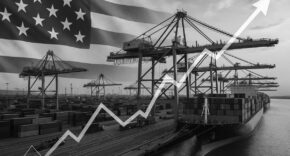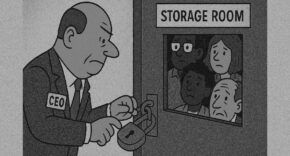The Building Blocks of Modern Medicine
Every pill, capsule, or vial of medicine relies on a key ingredient that makes it work: the active pharmaceutical ingredient, or API. APIs are the chemical substances that produce a drug’s intended therapeutic effect, whether it is lowering blood pressure, killing bacteria, or suppressing inflammation. They are mixed with inactive substances called excipients that help stabilize the product or control how it is absorbed in the body.
For the United States, the journey of an API often begins far from home. Most of these chemicals are made overseas, frequently passing through China before ending up in the hands of American manufacturers. Producing an API requires a chain of processes that begins with “key starting materials” such as solvents, reagents, and intermediates. These are combined through controlled chemical reactions to create the active ingredient itself. China has come to dominate this early stage of production, providing not just APIs but also the building blocks that make them possible.
How Deep Is America’s Dependence?
Experts disagree on the exact scale of U.S. dependence on Chinese-made APIs. Some reports claim that as little as 8 percent of U.S. drug ingredients come directly from China, while others suggest that indirect exposure through India could push the figure closer to 47 percent. The truth lies somewhere in between. According to a detailed analysis by Marta Wosińska and Yihan Shi of the Brookings Institution, roughly one quarter of all drugs sold in the United States contain an API made in China.
That number grows when accounting for indirect dependence. India, which produces about two-thirds of the generic drugs sold in America, imports up to 75 percent of its APIs from China when measured by weight. Although India maintains a strong domestic industry, Chinese chemicals still dominate the raw materials that feed Indian production.
This pattern means that even if a medication’s final ingredients are technically produced in India or the United States, the chemicals that make those ingredients often originate in China. As Wosińska and Shi warn, “Onshoring the API production stage alone has a limited impact on derisking from China if the precursors needed for API production come from China.”
A List of Critical Chinese APIs
While not all drugs depend on Chinese sources, some categories are far more vulnerable than others. Research by Brookings and Indian government agencies identified several essential APIs where Chinese firms hold overwhelming control:
- Antibiotics – including streptomycin, tobramycin, gentamicin, erythromycin, and capreomycin, which are essential for treating bacterial infections.
- Vitamins – particularly Vitamin C and several B vitamins that serve as the foundation for dietary supplements and fortified foods.
- Heparin – a critical anticoagulant used during surgeries and dialysis.
- Fluorinated intermediates – chemicals used to make major drug classes such as statins for cholesterol, sartans for blood pressure, and SSRIs for depression.
- Cancer drugs – including mitotane and abemaciclib, both important for oncology treatment.
- Anesthetics and antivirals – such as isoflurane, ipratropium bromide, and baloxavir marboxil.
Together, these drugs represent some of the most essential medications in hospitals and pharmacies. The Brookings researchers identified at least 36 drugs whose active ingredients are believed to rely exclusively on Chinese suppliers.
Why Dependence Equals Vulnerability
The danger lies not just in the finished ingredients but in the upstream chemical chain. Many Western and Indian manufacturers have stopped making the most hazardous and environmentally demanding steps in drug chemistry, such as fluorination or the use of highly toxic solvents. These processes have largely been outsourced to China, where environmental standards are looser and production costs lower.
A senior analyst familiar with U.S. pharmaceutical sourcing told Brookings that “manufacturers in Europe and even in India have ceded such syntheses to Chinese producers.” As a result, China now controls much of the world’s capacity for key chemical transformations that are essential for producing hundreds of small-molecule drugs.
This creates a strategic vulnerability. Even if U.S. firms onshore the final stages of API manufacturing, their supply chains could still collapse if access to Chinese intermediates, reagents, or solvents were cut off. As Wosińska and Shi put it, “Onshoring active ingredient production will not address the risk unless access to raw materials is also derisked.”
Negotiations and the New Trade Reality
So far, both the United States and China have avoided turning pharmaceuticals into a trade weapon. During the recent tariff exchanges between Washington and Beijing, medicines were one of the few sectors spared from additional tariffs. Yet the political undertone is clear. President Donald Trump has ordered a Section 232 national security investigation into the import of pharmaceuticals and has warned that “it’s all coming back,” referring to his plan to impose tariffs on drugs not made in America.
Chinese officials have sought to project caution. Sun Chenghao, a fellow at Tsinghua University, told Bloomberg that expanding the trade war to include medicine “would damage China’s credibility.” He added that “pharmaceuticals concern human health and life itself. Turning them into a geopolitical tool runs counter to China’s diplomatic philosophy.”
Still, not everyone is convinced China would hold back. Representative John Moolenaar, chairman of the House Select Committee on China, warned that “China has shown it is willing to weaponize economic leverage when it suits its interests. Medicines and their inputs are no exception.” He and other lawmakers have urged the administration to “build resilience and secure supply chains” before it is too late.
China’s Expanding Role in Global Pharma
Beyond chemical ingredients, China is also becoming a force in pharmaceutical innovation. According to data from GlobalData, China now accounts for about one fifth of all drugs in development worldwide and was the origin of 28 percent of licensed drug deals in 2024. The total value of these out-licensing deals reached $41.5 billion, a 66 percent increase over the previous year.
George El-Helou, a strategic intelligence analyst at GlobalData, said the trend “continues to validate the strength and maturity of China’s innovation landscape.” Once known for copied formulas and poor quality control, Chinese biotech firms are now producing some of the most advanced drug candidates, including monoclonal antibodies and metabolic therapies.
AstraZeneca has led the way in partnering with Chinese companies, signing a $5.2 billion agreement in June 2025 with CSPC Pharmaceuticals to co-develop drugs for chronic diseases. However, new U.S. legislation such as the amended BIOSECURE Act could restrict these partnerships by barring federally funded organizations from collaborating with Chinese firms.
If trade tensions escalate, the U.S. could face a pharmaceutical crisis on multiple fronts. A disruption in the flow of Chinese chemicals would quickly ripple through the American supply chain. Generic antibiotic production could falter, cancer treatments could become scarce, and hospital pharmacies could run out of critical anesthetics.
There are three main paths forward. First, the U.S. could face a supply shock, with sudden shortages of essential drugs. Second, Washington could pursue accelerated onshoring, offering tax breaks and regulatory fast-tracking to rebuild domestic chemical capacity. Third, it could pursue allied diversification, encouraging Europe, Japan, and India to reduce their shared dependence on Chinese suppliers.
Not everyone believes disaster is imminent. Some analysts point out that drug shortages in the past have mostly resulted from domestic manufacturing issues rather than geopolitical actions. “In the last 20 years, no shortages appear to have been caused by export restrictions,” the Brookings report notes. Critics of a rapid onshoring policy warn that it could drive up drug prices, increase taxpayer spending, and create inefficiencies.
Yet even the skeptics acknowledge the growing risk. China’s control of raw materials, its expanding share of API production, and its deepening relationships with Western pharma companies give it a quiet but powerful form of leverage.
As Treasury Secretary Scott Bessent and Chinese Vice Premier He Lifeng meet in Kuala Lumpur to discuss tariffs, President Trump has made his position clear: “I’m putting tariffs on pharmaceuticals unless they’re made here,” he told Fox Business. His remark underscores what many now recognize as the next front in U.S.–China competition.
China’s control of medicine is no longer just a commercial matter. It is a geopolitical hole card, one that could shape the balance of global health and power for years to come.





